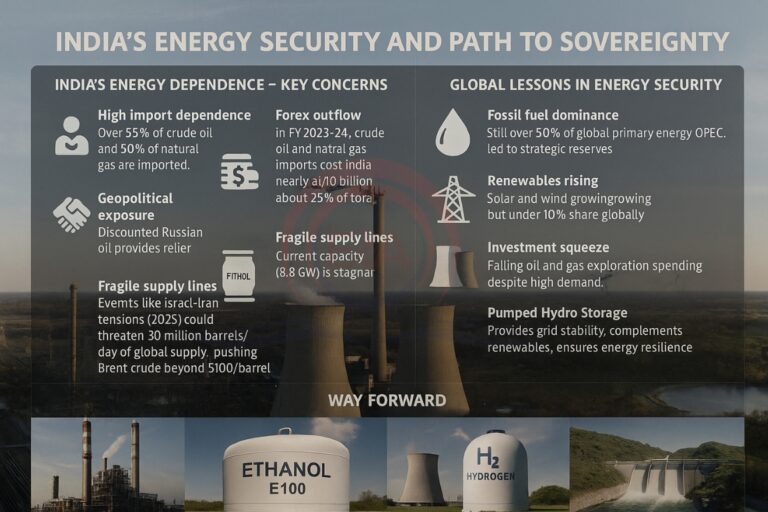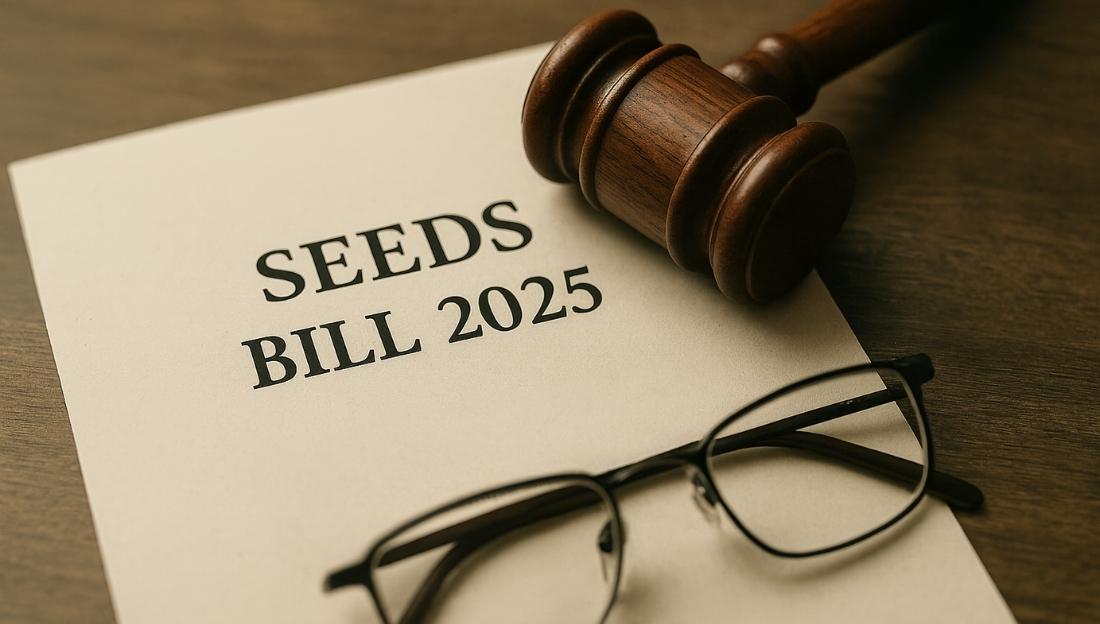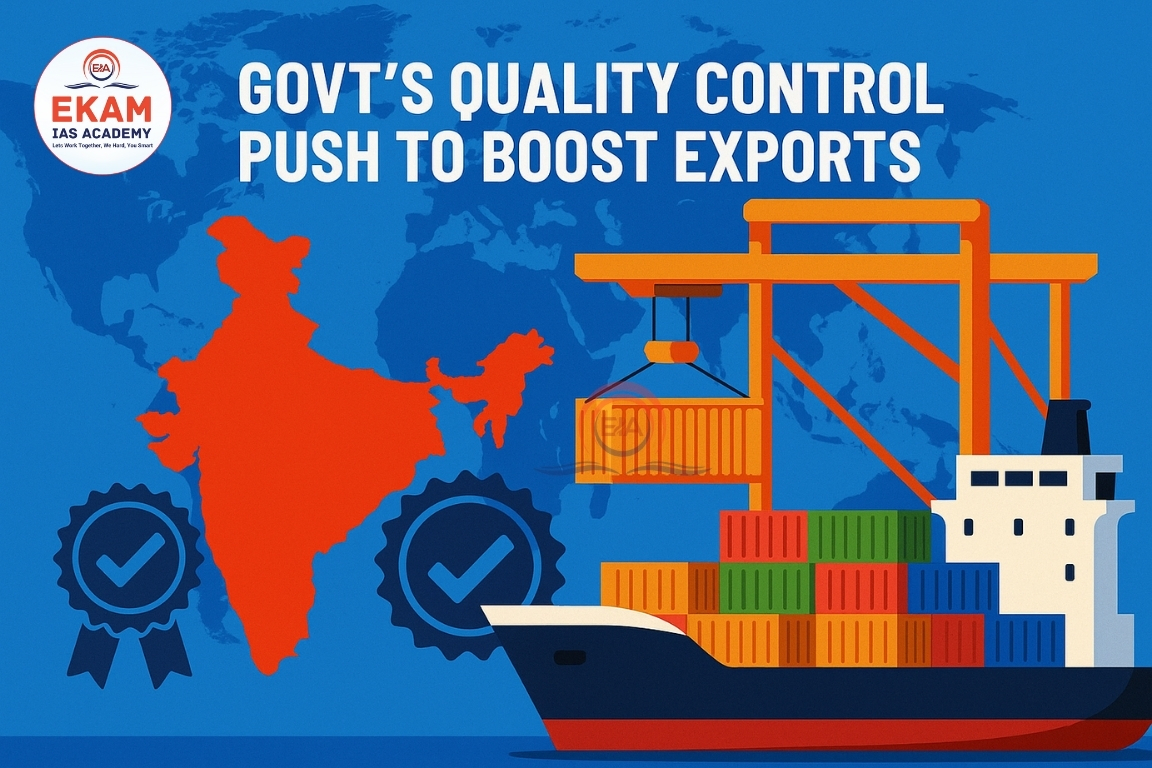Why in News?
Russia has recently become India’s largest crude oil supplier, contributing nearly 35–40% of total imports in 2024–25, a steep jump from just 2% before the Ukraine conflict. This dependence has renewed concerns about energy vulnerability and diversification.
About Energy
- Energy is the lifeblood of modern economies. For India, a fast-growing economy with rising demand, the challenge lies in ensuring affordable, reliable, and sustainable energy while reducing strategic vulnerabilities.
- Over-dependence on any single supplier or technology can expose the economy to external shocks, currency pressures, and geopolitical risks.
- Hence, energy security today is inseparable from economic stability and national sovereignty.

India’s Energy Dependence – Key Concerns
- High import dependence – Over 85% of crude oil and 50% of natural gas are imported.
- Forex outflow – In FY 2023–24, crude oil and natural gas imports alone cost India nearly $170 billion, about 25% of total imports.
- Geopolitical exposure – Discounted Russian oil provides relief, but over-reliance on one partner creates strategic risk.
- Fragile supply lines – Events like the Israel–Iran tensions (2025) could threaten 20 million barrels/day of global supply, pushing Brent crude beyond $100/barrel.
Global Lessons in Energy Security
- 1973 Oil Embargo – Showed dangers of excessive dependence on OPEC; led to strategic reserves and diversification.
- Fukushima Disaster (2011) – Raised doubts about nuclear energy, but climate concerns are reviving its importance.
- Texas Freeze (2021) – Highlighted need for infrastructure built for resilience, not just cost-efficiency.
- Russia–Ukraine War (2022) – Europe’s gas crisis proved that no nation is energy sovereign if single-sourced.
- Iberian Blackout (2025) – Over-reliance on renewables without backup caused grid collapse, stressing the need for balanced energy mixes.
Present Global Energy Landscape
- Fossil fuel dominance – Still over 80% of global primary energy.
- Transport dependence – Over 90% of vehicles run on hydrocarbons.
- Renewables rising – Solar and wind growing but under 10% share globally.
- Investment squeeze – Falling oil and gas exploration spending despite high demand makes markets prone to shocks.
Way Forward
- Coal Gasification
- India’s 150+ billion tonnes of coal can be converted into syngas, methanol, hydrogen, and fertilizers.
- New technologies and carbon capture can overcome the ash challenge.
- Biofuels Revolution
- Ethanol blending has already saved foreign exchange and boosted farmers’ income by ₹92,000 crore.
- SATAT scheme is promoting compressed biogas plants that also restore soil fertility in North India.
- Nuclear Energy
- Current capacity (8.8 GW) is stagnant.
- Reviving the thorium roadmap, localising Small Modular Reactors, and securing uranium are critical.
- Green Hydrogen
- India targets 5 MMT by 2030.
- Needs domestic electrolyser production, catalyst R&D, and safe storage systems for “sovereign hydrogen.”
- Pumped Hydro Storage
- Provides grid stability, complements renewables, and ensures energy resilience.
- India’s topography is suitable for expanding storage capacity.
Conclusion:
India’s energy pathway must be rooted in realism and sovereignty, not just affordability. Overdependence on any single source or partner is a recipe for vulnerability. The five-pillar approach — coal gasification, biofuels, nuclear, hydrogen, and pumped hydro — offers India a resilient backbone. In a turbulent global energy market, diversification and self-reliance are the true currencies of national strength.





